On August 28, 1908, disaster struck Folsom, a ranching and farming town on the plains in north- eastern New Mexico. It was late summer, which is often monsoon season. The hay had been cut and harvested. Leftover stalks littered the fields.
Monsoons can bring stunning amounts of water to the parched plains in short amounts of time. A cloudburst on August 28 dumped 14”, an unusually large amount of rain, even for monsoon season. The waters collected the hay stalks and other debris and swept it down the arroyos and rivers that are often dry. When the water reached the small railroad bridges that crossed those arroyos and dry rivers, the debris got caught and created impromptu dams. Under pressure from the swelling river, the dams gave way, resulting in a huge surge of water.

Residents up river from Folsom realized that the town was in danger. They called Sarah J. "Sally" Rooke, the Folsom telephone operator to warn of the coming danger. In 1908, telephones were not yet automated and connections could only be made by hand, sticking wires into holes for each telephone. Rooke stayed at her station and continued to call as many residents as she could to alert them to the impending wall of water. When the flood hit the town, Ms. Rooke was washed away. She was one of 18 people who died in the disaster.
On the day after the flood, a cowboy named George McJunkin was riding the range above the ravaged town of Folsom. He was looking for cattle that had gotten bogged down in the mud and fences that had been broken down. Instead, he found something that eventually changed the story of humans in North America.
McJunkin had been born a slave on a ranch in Midway, Texas. He was born in about 1856 and was probably around 9 years old when the Civil War began. Although he never received a formal education, he had a quick and inquisitive mind. Other cowboys taught him to read and write, speak Spanish, and play the fiddle and guitar. An enterprising man, when he was freed at the end of the war, he worked many jobs, including hunting buffalo and working on ranches in Colorado, New Mexico and Texas. He also spent some time loading bison bones onto boxcars.
McJunkin had been born a slave on a ranch in Midway, Texas. He was born in about 1856 and was probably around 9 years old when the Civil War began. Although he never received a formal education, he had a quick and inquisitive mind. Other cowboys taught him to read and write, speak Spanish, and play the fiddle and guitar. An enterprising man, when he was freed at the end of the war, he worked many jobs, including hunting buffalo and working on ranches in Colorado, New Mexico and Texas. He also spent some time loading bison bones onto boxcars.
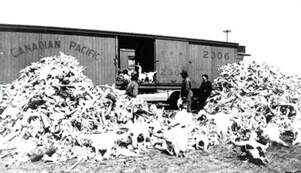
Hundreds of thousands of bison had been shot during the time that the railroads were coming west. Their carcasses were left to rot where they had fallen. When it was discovered that bone meal strengthens concrete, many of those piles of bison bones were loaded into boxcars and shipped east, to New York City, where the first skyscrapers were beginning to rise.

At the time of the Folsom flood, McJunkin was the foreman of the Crowfoot ranch, which lay upstream from Folsom. McJunkin was riding through Wild Horse Arroyo when he saw some bones sticking out of the soil some 11 feet below the surface of the mesa. McJunkin knew that the deeper an object was found, the older they usually were. These bones must be older than the ones typically found on the high-country grasslands. Furthermore, they were much larger than any bison bones he’d seen during his time loading bones onto railroad cars. Recognizing the significance of the find, McJunkin left the site undisturbed. He spent the rest of his life trying to get scientists to visit Wild Horse Arroyo. In 1918 he sent sample bones and a lance point to the Denver Museum of Natural History, who sent paleontologist Harold Cook to look at them the following spring. Cook and McJunkin did some exploratory digging but found nothing that Cook deemed important. When McJunkin died in 1922, the site was still considered just a place where bison antiquus had died.
Scientists already knew that giant bison, far larger than modern ones, once roamed North America. Their bones were first discovered at Big Bone Lick, Kentucky in the 1850s. One of the many megafaunas, or giant animals that existed during the Pleistocene period, or the last Ice Age, Bison Antiquus could reach 7.4 ft tall, be 15 ft long, and weigh up to 3,501 lbs. Their horns were considerably larger than those of living American bison and differed in shape, some looking more like longhorn cattle than the small, curved horns of modern bison. These giant beasts had a large range. Specimens of Bison antiquus have been discovered in the United States, Canada, and Mexico. They went extinct sometime around 9,000 years B.C.E.
Four years after McJunkin’s death, the Colorado Museum of Natural History sent a crew of paleontologists to Wild Horse Arroyo with the intention of excavating a prehistoric Bison skeleton for their museum. Instead, they discovered something that changed archaeologist's understanding of man in the North American hemisphere. The Museum workers found stone projectile points that are now known as “Folsom points.” One, actually embedded in a rib, proved that the points were left by men who were hunting bison these bison. By studying the site and the angles of the cut marks in the bones, scientists have been able to determine that ancient men herded the bison into the arroyo, then attacked them from above. Scientists have found the skeletons of 32 bison. Cut marks in the bones show that some of the choicest meats where butchered off the animals, but much was left in place.
Until this discovery, scientists had believed that men had crossed the Bering Strait into North America about 2,000 b.c.e. George McJunkin’s find showed that man was here 7,000 years earlier than previously thought. Since then, Folsom points have been found in many places in North America, and other finds have pushed back man’s arrival on the continent even further.
Sally Rooke and George McJunkin are both buried in the Folsom Cemetery, which occupies a windy and isolated hill outside of town. The town itself has a museum that is housed in an old mercantile. The Historical Society sponsors trips to the Folsom Site twice a year.

A former New Mexico History teacher, Jennifer Bohnhoff is the author of a number of books for middle grade through adult readers, many of which are set in her home state of New Mexico. Her latest book, In the Shadow of Sunrise, tells the story of Folsom people in Colorado, Texas and New Mexico and includes the Folsom site. It will be published in April 2025 and is available for preorder.

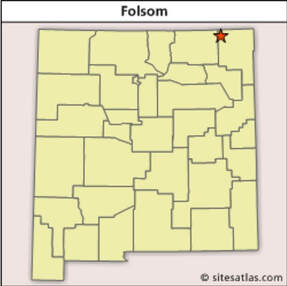


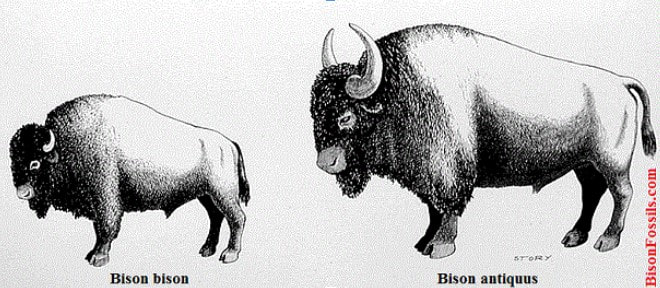
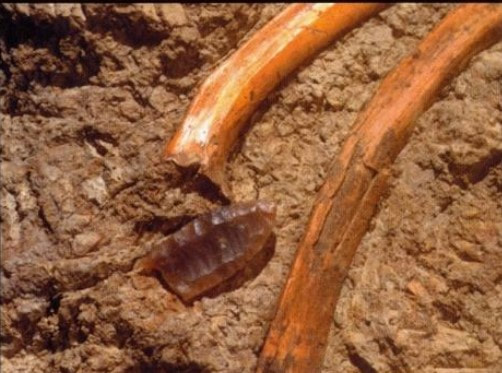



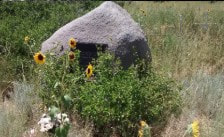




No comments:
Post a Comment